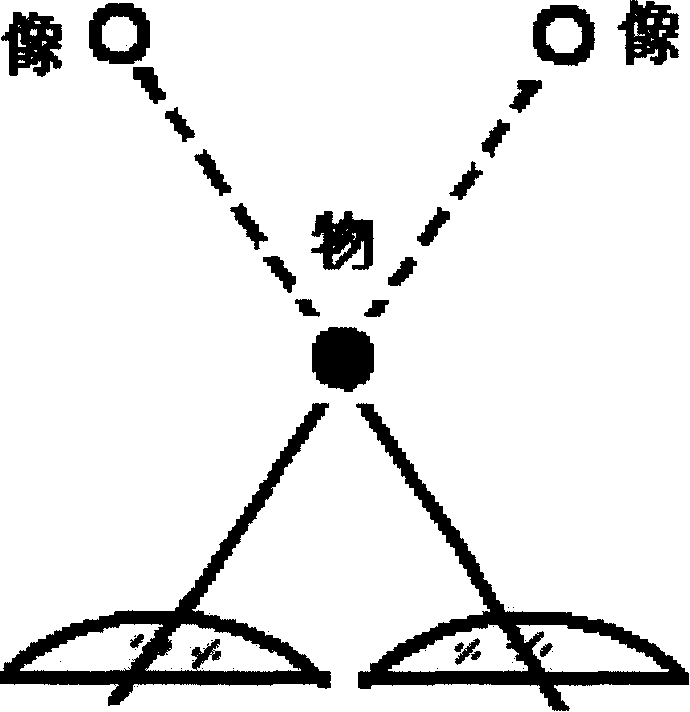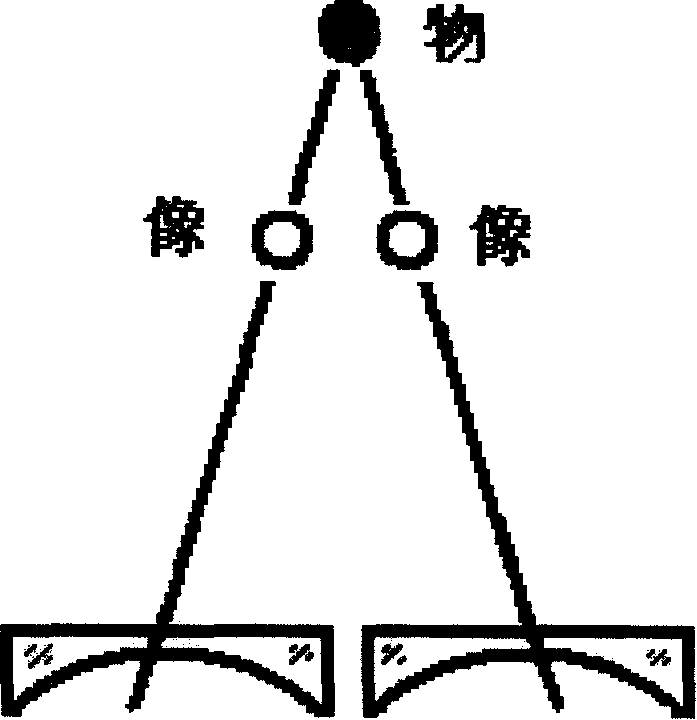Collections glasses piece, collections glasses and uses thereof
A technology of spectacle lenses and glasses, which is applied in the field of glasses, and can solve problems such as breaking eye coordination habits, uncomfortable eyes, and uncomfortable glasses
- Summary
- Abstract
- Description
- Claims
- Application Information
AI Technical Summary
Problems solved by technology
Method used
Image
Examples
Embodiment 1
[0056] Embodiment 1: the glasses shown in Figure 21 are collection glasses that improve the collection function of other presbyopia glasses, and its structure is as shown in Figure 29, and the spectacle lenses of the collection glasses are two symmetrical refracting prisms 1 (if the refracting prisms The deflection angle is decomposed into horizontal direction and vertical direction, then the components in the horizontal direction are opposite in direction, equal in size and not equal to zero; the components in the vertical direction are in the same direction, equal in size, can be equal to zero or not equal to zero. The base of the refracting prism can be all inwards, or all outwards, or all inwards, etc.), the bases of these two refracting prisms 1 are all inwards in this example, and the deflection angles are all 9 prism degrees (1 prism in the Platts prism calibration method degrees is approximately equal to 0.5729 degrees). Connecting parts 2 are arranged on the spectacle...
example 2
[0057] Example 2: As shown in Figure 23, the difference between collective glasses and ordinary glasses is that the spectacle lenses are two left-right symmetrical collective spectacle lenses 1, and the collective spectacle lenses are composed of two prisms of different materials closely connected together to reduce chromatic aberration Refracting prisms, the bases of the two refracting prisms 1 are both inward and downward, the deflection angle is 12 prism degrees, and the magnitude of the horizontal component of the deflection angle is 9 prism degrees. The advantage of the base of the refracting prism facing inwards rather than the bases facing inwards is that it can reduce the degree of bowing the head when studying. The spectacles in this collection can be separately used as presbyopic spectacles for those who are accustomed to often wearing myopia spectacles or glasses for nearsightedness. It can also be used as glasses to improve other presbyopic glasses collection funct...
example 3
[0058] Example 3: As shown in Figure 24, the difference between the collection glasses and ordinary glasses is that the glasses frames (8 and 7) can be equipped with two layers of glasses, and the fixed glasses frame 7 has an empty position 4 for installing the other two lens glasses. , there is also a rotatable bottle cap type mirror frame 8 in front of the fixed spectacle frame, and there are two collection spectacle lenses (i.e. refracting prism spectacle lenses) 1 in the bottle cap type spectacle frame, and in the bottle cap type spectacle frame and mirror There is a mark indicating the orientation of the base of the deflection angle on the shelf. Rotating the bottle-cap type frame can change the base orientation of the refractive prism lens and stabilize it in a left-right symmetrical position. The deflection angle of the refracting prism is 10 prism degrees.
PUM
| Property | Measurement | Unit |
|---|---|---|
| Diopter | aaaaa | aaaaa |
Abstract
Description
Claims
Application Information
 Login to View More
Login to View More - R&D
- Intellectual Property
- Life Sciences
- Materials
- Tech Scout
- Unparalleled Data Quality
- Higher Quality Content
- 60% Fewer Hallucinations
Browse by: Latest US Patents, China's latest patents, Technical Efficacy Thesaurus, Application Domain, Technology Topic, Popular Technical Reports.
© 2025 PatSnap. All rights reserved.Legal|Privacy policy|Modern Slavery Act Transparency Statement|Sitemap|About US| Contact US: help@patsnap.com



